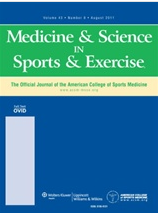Roberts WO, Schwartz RS, Kraus SM, Schwartz JG, Peichel G, Garberich RF, Lesser JR, Oesterle SN, Wickstrom KK, Knickelbine T, Harris KM.
INTRODUCTION: Marathon running is presumed to improve cardiovascular risk, but health benefits of high volume running are unknown. High-resolution coronary computed tomography angiography and cardiac risk factor assessment were completed in women with long-term marathon running histories to compare to sedentary women with similar risk factors.
METHODS: Women who had run at least one marathon per year for 10–25 yr underwent coronary computed tomography angiography, 12-lead ECG, blood pressure and heart rate measurement, lipid panel, and a demographic/health risk factor survey. Sedentary matched controls were derived from a contemporaneous clinical study database. CT scans were analyzed for calcified and noncalcified plaque prevalence, volume, stenosis severity, and calcium score.
RESULTS: Women marathon runners (n = 26), age 42–82 yr, with combined 1217 marathons (average 47) exhibited significantly lower coronary plaque prevalence and less calcific plaque volume. The marathon runners also had less risk factors (smoking, hypertension, and hyperlipidemia); significantly lower resting heart rate, body weight, body mass index, and triglyceride levels; and higher high-density lipoprotein cholesterol levels compared with controls (n = 28). The five women runners with coronary plaque had run marathons for more years and were on average 12 yr older (65 vs 53) than the runners without plaque.
CONCLUSION: Women marathon runners had minimal coronary artery calcium counts, lower coronary artery plaque prevalence, and less calcified plaque volume compared with sedentary women. Developing coronary artery plaque in longterm women marathon runners appears related to older age and more cardiac risk factors, although the runners with coronary artery plaque had accumulated significantly more years running marathons.
Article in PDF (for private use only)



